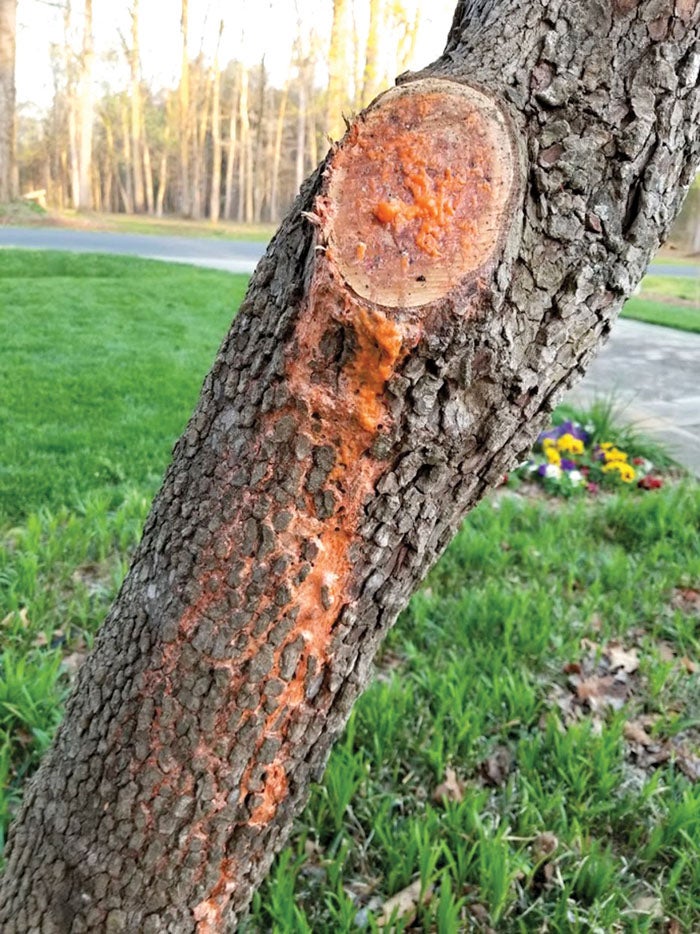Recent rains, warmer days good for your garden
Published 12:00 am Friday, April 27, 2018

- Darrell Blackwelder/For the Salisbury Post This orange slime is a form of yeast that you can wash away.
The cooler than normal spring weather has, in some situations, prolonged and intensified colors of flowering trees and shrubs throughout Rowan County.
Our recent rainfall, coupled with warm weather, is just the spark plant materials and lawns need for maximum growth going into the summer. Below are a few questions from homeowners posed to me while I’ve been out and about that may be of interest.
Question: I have a dogwood that had a low-lying limb I pruned back about a month ago. It was bleeding badly after it was pruned. Now the tree wound area has a mass of orange slime over the exposed bleeding cut area. Is this orange slime going to kill the tree?
Answer: The sap bleeding from the wound is from an orange yeast and fungi that naturally exists in our humid environment. The tree sap contains nutrients for the tree with large amounts of sugars and carbohydrates which are perfect for yeast growth and the orange appearance. The bleeding will eventually stop and the orange yeast will fade away, but you can wash off the orange slime with no problems.
Question: There is a large shrub blooming in the county on Long Ferry Road that my mother told me was a snowball bush. The bloom looks much like that of a hydrangea, but the shrub is much taller than our hydrangeas with more profuse snow white, round blooms. Is this shrub some type of hydrangea?
Answer: The shrub is most likely a snowball viburnum (Viburnum macrocephalum). They grow profusely in our area and are in full bloom now. Viburnums can tolerate heat and dry soils much better than hydrangeas. The blooms of both types of shrubs look very similar and can be very confusing, especially with the new cultivars of limelight hydrangeas that can tolerate heat and sun.
Question: My husband and I have an area in our lawn that will not grow grass. It’s near some large oak trees. He wants to spread top soil over this area in hopes that it would allow the grass to grow better. Do you think this is a good idea?
Answer: Well … not really. If the grass is growing well in other areas of the lawn, it’s most likely because of excessive shade from the trees. Shade is a very common problem with fescue lawns. Fescue grows well in the late fall and through May in these areas, then as soon as trees leaf out and shade arrives, the fescue quickly declines. A better solution would be to limb up lower branches on the trees to allow more light into that area or apply mulch or a groundcover in the shady area to replace the grass.
Darrell Blackwelder is retired Extension director with the North Carolina Cooperative Extension Service in Rowan County.




